 |
Matronics Email Lists
Web Forum Interface to the Matronics Email Lists
|
| View previous topic :: View next topic |
| Author |
Message |
bobnoffs
Joined: 04 Jul 2012
Posts: 137
Location: northern wi.
|
 Posted: Wed Aug 15, 2018 2:43 pm Post subject: elt antenna Posted: Wed Aug 15, 2018 2:43 pm Post subject: elt antenna |
 |
|
in the process of mounting the antenna for an aretex 345 elt. i am wondering if anyone has any experience mounting this antenna base 4-5'' below the longeron and window. i am asking if that bottom 5'' of antenna behind an alum. skin will impair signal. the bottom 8 or 9'' of the antenna is encased in hard rubber.
i asked a factory rep about this but it was a pretty ambigious answer. i suppose it is a pretty unpredictable set of circumstances. anyone that can speak from experience or knowledge please let me know.
bob noffs
p.s. o.v.m. is almost in.
| | - The Matronics AeroElectric-List Email Forum - | | | Use the List Feature Navigator to browse the many List utilities available such as the Email Subscriptions page, Archive Search & Download, 7-Day Browse, Chat, FAQ, Photoshare, and much more:
http://www.matronics.com/Navigator?AeroElectric-List |
|
|
|
| Back to top |
|
 |
stuart(at)stuarthutchison
Guest
|
 Posted: Wed Aug 15, 2018 4:11 pm Post subject: elt antenna Posted: Wed Aug 15, 2018 4:11 pm Post subject: elt antenna |
 |
|
Gâday Bob.
I working a similar problem.
My part number is ELT10-773 for a Kannad Compact if you want to look up a pic. I believe these ELT whip antennas are base-loaded, meaning the Acetal plastic base is also generating signal and should not be shielded by a metal fuselage.
I donât want all that thick antenna base hanging out in the breeze. For this reason I have installed mine in the dorsal fin, but with the empennage fitted I canât reach into the fuselage from the back to uncouple the coax BNC, so I need to make a doubler in the skin to unscrew the mount from above. This requires taking the dorsal fin off, which puts some pressure on the antenna base and causes some flex in the skin (cos it wraps around the leading edge of the horizontal stab). I would like to make a flex joint to stop the skin movement, but I suspect this antenna requires proper grounding to a ground plane just like a COM antenna.
Kind regards, Stu
| Quote: | On 16 Aug 2018, at 08:43, bobnoffs <icubob(at)gmail.com> wrote:
in the process of mounting the antenna for an aretex 345 elt. i am wondering if anyone has any experience mounting this antenna base 4-5' below the longeron and window. i am asking if that bottom 5' of antenna behind an alum. skin will impair signal. the bottom 8 or 9' of the antenna is encased in hard rubber.
i asked a factory rep about this but it was a pretty ambigious answer. i suppose it is a pretty unpredictable set of circumstances. anyone that can speak from experience or knowledge please let me know.
bob noffs
p.s. o.v.m. is almost in.
Read this topic online here:
http://forums.matronics.com/viewtopic.php?p=482430#482430
|
| | - The Matronics AeroElectric-List Email Forum - | | | Use the List Feature Navigator to browse the many List utilities available such as the Email Subscriptions page, Archive Search & Download, 7-Day Browse, Chat, FAQ, Photoshare, and much more:
http://www.matronics.com/Navigator?AeroElectric-List |
|
|
|
| Back to top |
|
 |
nuckolls.bob(at)aeroelect
Guest
|
 Posted: Thu Aug 16, 2018 6:12 am Post subject: elt antenna Posted: Thu Aug 16, 2018 6:12 am Post subject: elt antenna |
 |
|
| Quote: |
My part number is ELT10-773 for a Kannad Compact if you want to look up a pic. I believe these ELT whip antennas are base-loaded, meaning the Acetal plastic base is also generating signal and should not be shielded by a metal fuselage. |
None of the ELT antennas are 'gain' devices meaning that
their mechanical length is 1/4 wavelength or less. When
'shortened' they must be electrically resonated (loaded)
to present an energy accepting and least reactive
termination of the feed line.
Back in 2004, I wrote about a kerfuffle with elt
antennas on the Beechjet. Seems that somewhere along
the history of this installation, somebody decided
that it would be really cool if the antennas could
be totally enclosed under the dorsal fine toe fairing.
[img]cid:.0[/img]
This situated the antennas in close proximity to
metallic obstructions to idealized radiation
patterns. Another insult to performance was
perpetrated by a fiberglas cover which was
was host to some inlet air ducts for the
HVAC system.
So they added a metal bracket (which had to be bonded
to structure for lighting issues) to mount a phenolic
block intended to conform the antennas to space
under the fairing by deflecting them down and aft
against the phenolic block.
[img]cid:.1[/img]
[img]cid:.2[/img]
This work-around was no doubt enthusiastically
accepted by everybody but the ELT manufacturer. I
was unable to locate any documents that described tests
of this installation wherein performance degradation
was deemed acceptable.
The problem didn't come to the attention of the
ELT manufacturer until some of their more agile
products began to complain about high SWR. I
proposed that the stock antenna be replaced with
top loaded verticals that were not only mechanically
shorter but tailored to accommodate the proximity
effects of local conductors.
[img]cid:.3[/img]
However, this was a TSO'd installation holy-watered with
the as-supplied antennas.
Tailoring new antennas to the installation would require
re-certification of the ELT. But there was silence when
I inquired as to how badly the TSO was being compromised
by the non-standard installation of the stock antennas.
The 'fix' was to change software in the ELT to accept
higher SWR values . . . seems that didn't disrespect
the TSO . . .
Bottom line is that the lion's share of radiation
flux from these antennas comes from the bottom third
of the antenna . . . the area where the highest currents
are found. This means that 'top' loading as illustrated
above does not seriously affect antenna performance but
it does narrow bandwidth . . . not a big deal for
single frequency operations.
So while deliberating ways and means of getting the
stock antennas situated for best esthetics and/or
aerodynamics, be aware of potential distortions of
radiation patterns and performance. Be aware also
that without instrumented investigation of performance,
any opinions as to the effects of non-standard
installation are more guess than fact.
Bob . . .
| | - The Matronics AeroElectric-List Email Forum - | | | Use the List Feature Navigator to browse the many List utilities available such as the Email Subscriptions page, Archive Search & Download, 7-Day Browse, Chat, FAQ, Photoshare, and much more:
http://www.matronics.com/Navigator?AeroElectric-List |
|
| Description: |
|
| Filesize: |
189.02 KB |
| Viewed: |
20481 Time(s) |
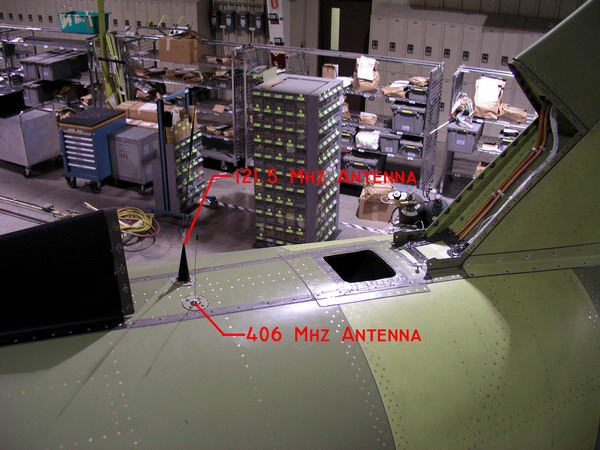
|
| Description: |
|
| Filesize: |
137.1 KB |
| Viewed: |
20481 Time(s) |
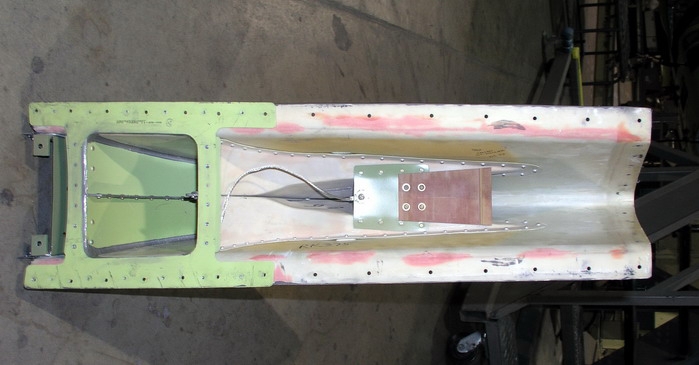
|
| Description: |
|
| Filesize: |
73.79 KB |
| Viewed: |
20481 Time(s) |

|
| Description: |
|
| Filesize: |
62.71 KB |
| Viewed: |
20481 Time(s) |
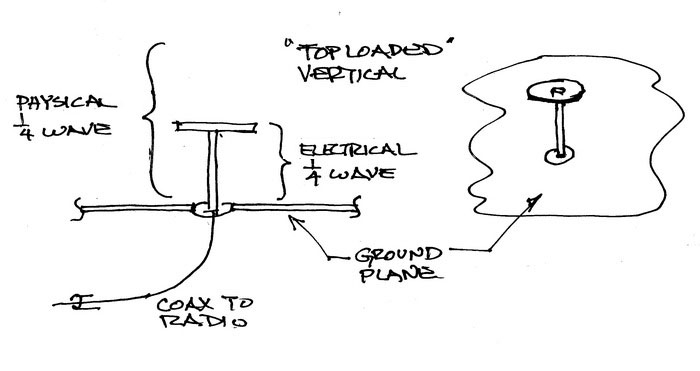
|
|
|
| Back to top |
|
 |
rv10pro(at)gmail.com
Guest
|
 Posted: Thu Aug 16, 2018 7:58 am Post subject: elt antenna Posted: Thu Aug 16, 2018 7:58 am Post subject: elt antenna |
 |
|
Your insight and presentation is invaluable. I have seen too many builders conceal the antenna and then its effectiveness is negated. They can answer Yes the have an ELT, yes they can hear it on their radio and then if needed it is ineffective.
On Thu, Aug 16, 2018 at 7:20 AM Robert L. Nuckolls, III <nuckolls.bob(at)aeroelectric.com (nuckolls.bob(at)aeroelectric.com)> wrote:
| Quote: | | Quote: |
My part number is ELT10-773 for a Kannad Compact if you want to look up a pic. I believe these ELT whip antennas are base-loaded, meaning the Acetal plastic base is also generating signal and should not be shielded by a metal fuselage. |
 None of the ELT antennas are 'gain' devices meaning that
 their mechanical length is 1/4 wavelength or less. When
 'shortened' they must be electrically resonated (loaded)
 to present an energy accepting and least reactive
 termination of the feed line.
 Back in 2004, I wrote about a kerfuffle with elt
 antennas on the Beechjet. Seems that somewhere along
 the history of this installation, somebody decided
 that it would be really cool if the antennas could
 be totally enclosed under the dorsal fine toe fairing.
[img]cid:.0[/img]
 This situated the antennas in close proximity to
 metallic obstructions to idealized radiation
 patterns. Another insult to performance was
 perpetrated by a fiberglas cover which was
 was host to some inlet air ducts for the
 HVAC system.
Â
 So they added a metal bracket (which had to be bonded
 to structure for lighting issues) to mount a phenolic
 block intended to conform the antennas to space
 under the fairing by deflecting them down and aft
 against the phenolic block.
[img]cid:.1[/img]
[img]cid:.2[/img]
 This work-around was no doubt enthusiastically
 accepted by everybody but the ELT manufacturer. I
 was unable to locate any documents that described tests
 of this installation wherein performance degradation
 was deemed acceptable.
 The problem didn't come to the attention of the
 ELT manufacturer until some of their more agile
 products began to complain about high SWR. I
 proposed that the stock antenna be replaced with
 top loaded verticals that were not only mechanically
 shorter but tailored to accommodate the proximity
 effects of local conductors.
[img]cid:.3[/img]
 However, this was a TSO'd installation holy-watered with
 the as-supplied antennas.
 Tailoring new antennas to the installation would require
 re-certification of the ELT. But there was silence when
 I inquired as to how badly the TSO was being compromised
 by the non-standard installation of the stock antennas.
 The 'fix' was to change software in the ELT to accept
 higher SWR values . . . seems that didn't disrespect
 the TSO . . .
 Bottom line is that the lion's share of radiation
 flux from these antennas comes from the bottom third
 of the antenna . . . the area where the highest currents
 are found. This means that 'top' loading as illustrated
 above does not seriously affect antenna performance but
 it does narrow bandwidth . . . not a big deal for
 single frequency operations.
 So while deliberating ways and means of getting the
 stock antennas situated for best esthetics and/or
 aerodynamics, be aware of potential distortions of
 radiation patterns and performance. Be aware also
 that without instrumented investigation of performance,
 any opinions as to the effects of non-standard
 installation are more guess than fact.
 Bob . . .
|
--
Johnny C.
| | - The Matronics AeroElectric-List Email Forum - | | | Use the List Feature Navigator to browse the many List utilities available such as the Email Subscriptions page, Archive Search & Download, 7-Day Browse, Chat, FAQ, Photoshare, and much more:
http://www.matronics.com/Navigator?AeroElectric-List |
|
| Description: |
|
| Filesize: |
189.02 KB |
| Viewed: |
20481 Time(s) |
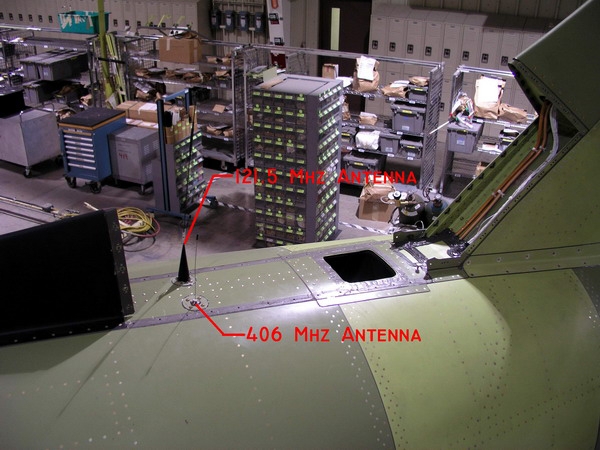
|
| Description: |
|
| Filesize: |
137.1 KB |
| Viewed: |
20481 Time(s) |
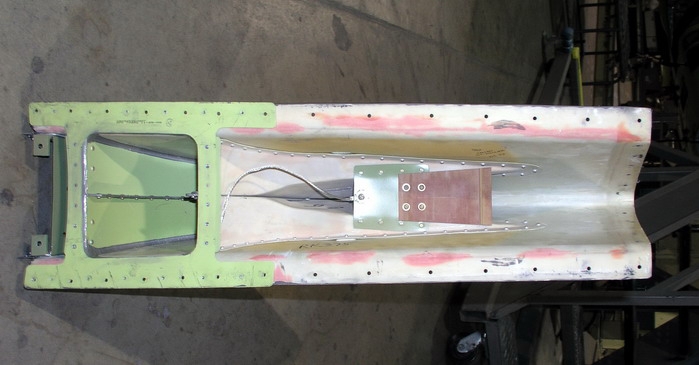
|
| Description: |
|
| Filesize: |
73.79 KB |
| Viewed: |
20481 Time(s) |
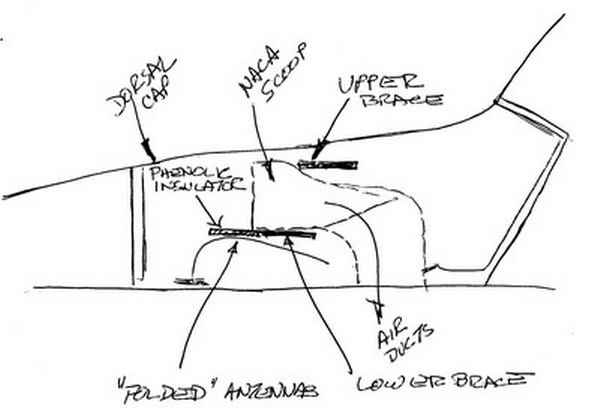
|
| Description: |
|
| Filesize: |
62.71 KB |
| Viewed: |
20481 Time(s) |
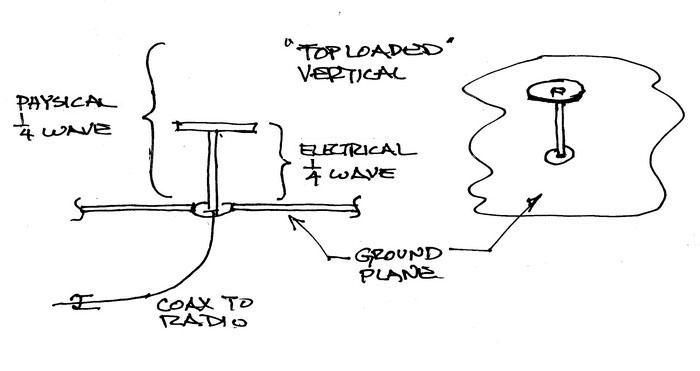
|
| Description: |
|
| Filesize: |
137.1 KB |
| Viewed: |
20481 Time(s) |
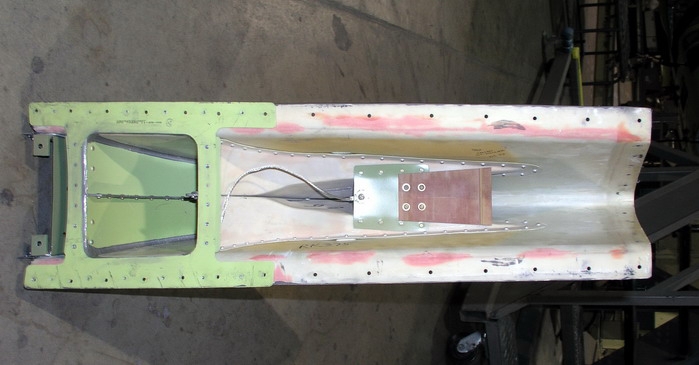
|
|
|
| Back to top |
|
 |
kuffel(at)cyberport.net
Guest
|
 Posted: Thu Aug 16, 2018 8:13 am Post subject: elt antenna Posted: Thu Aug 16, 2018 8:13 am Post subject: elt antenna |
 |
|
Bob,
<< any experience mounting this antenna base 4-5' below the longeron and window >>
(assume you mean 4-5 inches)
My direct experience, both personal and as a searcher, is almost any installation anywhere will put out a signal detectable by the satellites. The rather universal exception is an external mounted antenna during a severe crash. What happens then is the antenna is sheared off and becomes worthless.
So as much as anyone can predict, your installation will work better than most given the need.
Tom Kuffel
former antenna engineer (ca. 1966)
 Virus-free. www.avast.com [url=#DAB4FAD8-2DD7-40BB-A1B8-4E2AA1F9FDF2] [/url] Virus-free. www.avast.com [url=#DAB4FAD8-2DD7-40BB-A1B8-4E2AA1F9FDF2] [/url]
| | - The Matronics AeroElectric-List Email Forum - | | | Use the List Feature Navigator to browse the many List utilities available such as the Email Subscriptions page, Archive Search & Download, 7-Day Browse, Chat, FAQ, Photoshare, and much more:
http://www.matronics.com/Navigator?AeroElectric-List |
|
|
|
| Back to top |
|
 |
nuckolls.bob(at)aeroelect
Guest
|
 Posted: Thu Aug 16, 2018 8:27 am Post subject: elt antenna Posted: Thu Aug 16, 2018 8:27 am Post subject: elt antenna |
 |
|
At 11:12 AM 8/16/2018, you wrote:
| Quote: | Bob,
<< any experience mounting this antenna base 4-5' below the longeron and window >>
(assume you mean 4-5 inches)
My direct experience, both personal and as a searcher, is almost any installation anywhere will put out a signal detectable by the satellites. The rather universal exception is an external mounted antenna during a severe crash. What happens then is the antenna is sheared off and becomes worthless.
So as much as anyone can predict, your installation will work better than most given the need.
Tom Kuffel
former antenna engineer (ca. 1966) |
Good data sir . . . thanks!
Bob . . .
| | - The Matronics AeroElectric-List Email Forum - | | | Use the List Feature Navigator to browse the many List utilities available such as the Email Subscriptions page, Archive Search & Download, 7-Day Browse, Chat, FAQ, Photoshare, and much more:
http://www.matronics.com/Navigator?AeroElectric-List |
|
|
|
| Back to top |
|
 |
echristley(at)att.net
Guest
|
 Posted: Thu Aug 16, 2018 9:39 am Post subject: elt antenna Posted: Thu Aug 16, 2018 9:39 am Post subject: elt antenna |
 |
|
Bob,
I have some interest in that top loaded antennae you depict. I mounted my whip antennae on the belly of a Zenith 601XL, in order to remove the interference that it had with my comm antennae. Well, now it almost drags the ground. Not a good thing on a grass strip. It would be nice to have a shorter antennae.
With that being said, I'm firmly in the camp of not ever expecting to rely on an ELT for anyone to find me. It's there and operating for legal compliance and nothing else.
On Thursday, August 16, 2018 10:14 AM, "Robert L. Nuckolls, III" <nuckolls.bob(at)aeroelectric.com> wrote:
| Quote: |
My part number is ELT10-773 for a Kannad Compact if you want to look up a pic. I believe these ELT whip antennas are base-loaded, meaning the Acetal plastic base is also generating signal and should not be shielded by a metal fuselage. |
None of the ELT antennas are 'gain' devices meaning that
their mechanical length is 1/4 wavelength or less. When
'shortened' they must be electrically resonated (loaded)
to present an energy accepting and least reactive
termination of the feed line.
Back in 2004, I wrote about a kerfuffle with elt
antennas on the Beechjet. Seems that somewhere along
the history of this installation, somebody decided
that it would be really cool if the antennas could
be totally enclosed under the dorsal fine toe fairing.
[img]cid:.0[/img]
This situated the antennas in close proximity to
metallic obstructions to idealized radiation
patterns. Another insult to performance was
perpetrated by a fiberglas cover which was
was host to some inlet air ducts for the
HVAC system.
So they added a metal bracket (which had to be bonded
to structure for lighting issues) to mount a phenolic
block intended to conform the antennas to space
under the fairing by deflecting them down and aft
against the phenolic block.
[img]cid:.1[/img]
[img]cid:.2[/img]
This work-around was no doubt enthusiastically
accepted by everybody but the ELT manufacturer. I
was unable to locate any documents that described tests
of this installation wherein performance degradation
was deemed acceptable.
The problem didn't come to the attention of the
ELT manufacturer until some of their more agile
products began to complain about high SWR. I
proposed that the stock antenna be replaced with
top loaded verticals that were not only mechanically
shorter but tailored to accommodate the proximity
effects of local conductors.
[img]cid:.3[/img]
However, this was a TSO'd installation holy-watered with
the as-supplied antennas.
Tailoring new antennas to the installation would require
re-certification of the ELT. But there was silence when
I inquired as to how badly the TSO was being compromised
by the non-standard installation of the stock antennas.
The 'fix' was to change software in the ELT to accept
higher SWR values . . . seems that didn't disrespect
the TSO . . .
Bottom line is that the lion's share of radiation
flux from these antennas comes from the bottom third
of the antenna . . . the area where the highest currents
are found. This means that 'top' loading as illustrated
above does not seriously affect antenna performance but
it does narrow bandwidth . . . not a big deal for
single frequency operations.
So while deliberating ways and means of getting the
stock antennas situated for best esthetics and/or
aerodynamics, be aware of potential distortions of
radiation patterns and performance. Be aware also
that without instrumented investigation of performance,
any opinions as to the effects of non-standard
installation are more guess than fact.
Bob . . .
| | - The Matronics AeroElectric-List Email Forum - | | | Use the List Feature Navigator to browse the many List utilities available such as the Email Subscriptions page, Archive Search & Download, 7-Day Browse, Chat, FAQ, Photoshare, and much more:
http://www.matronics.com/Navigator?AeroElectric-List |
|
| Description: |
|
| Filesize: |
189.02 KB |
| Viewed: |
20481 Time(s) |
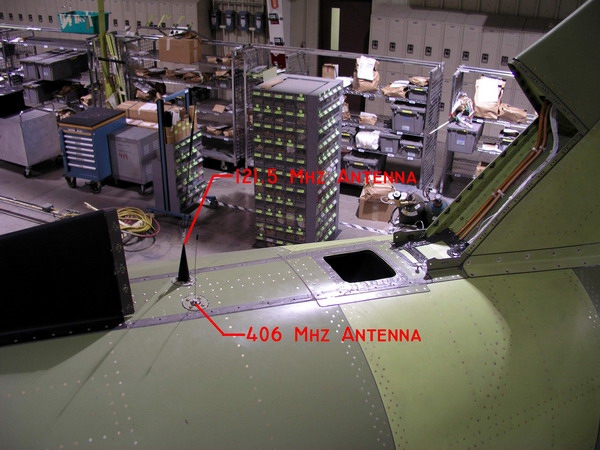
|
| Description: |
|
| Filesize: |
137.1 KB |
| Viewed: |
20481 Time(s) |
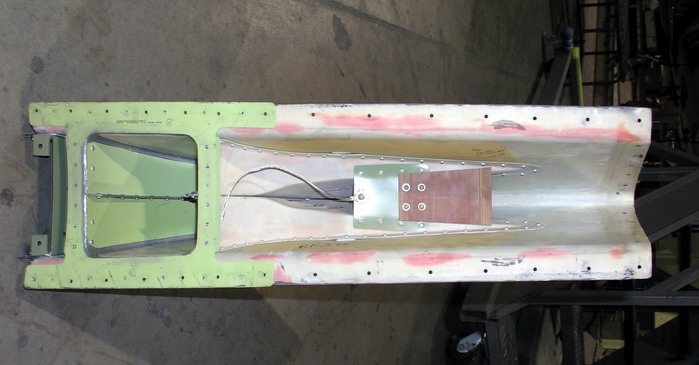
|
| Description: |
|
| Filesize: |
73.79 KB |
| Viewed: |
20481 Time(s) |
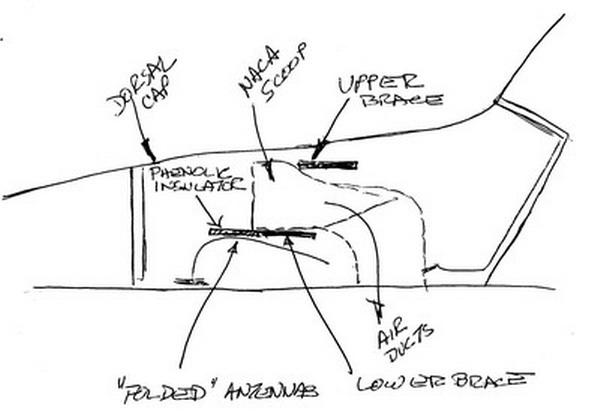
|
| Description: |
|
| Filesize: |
62.71 KB |
| Viewed: |
20481 Time(s) |
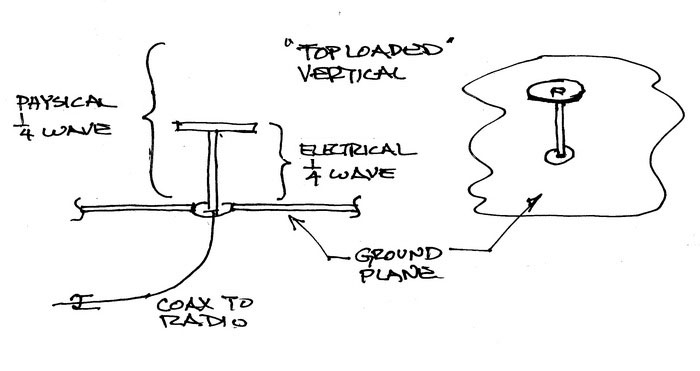
|
|
|
| Back to top |
|
 |
BARRY CHECK 6
Joined: 15 Mar 2011
Posts: 738
|
 Posted: Thu Aug 16, 2018 10:04 am Post subject: elt antenna Posted: Thu Aug 16, 2018 10:04 am Post subject: elt antenna |
 |
|
Many, if not Most crashes wind up with the plane Up-Side-Down.
So top mounted antennas become buried in the dirt or broken off.
When an aluminum plane is upside down there is even more of a barrier between the ELT antenna and the sky.Â
Wing Tips usually have the least amount of damage from a crash.
And, they are usually the farest away from the fuel tanks, the Horz Stab wing tips being the best location.
Personally I feel ELT's are one step above useless. They are usually in a fixed location, broken, buried,or have a dead battery. They are an FAA Reg, not a true safety, Search & Rescue device.
Consider a Personal Around the neck, or leg mounted PLT (Personal Locating Transmitter).
Choose wisely Grasshopper,
Barry
On Thu, Aug 16, 2018 at 1:46 PM Ernest Christley <echristley(at)att.net (echristley(at)att.net)> wrote:
| Quote: | Bob,
I have some interest in that top loaded antennae you depict. I mounted my whip antennae on the belly of a Zenith 601XL, in order to remove the interference that it had with my comm antennae. Well, now it almost drags the ground. Not a good thing on a grass strip. It would be nice to have a shorter antennae.
With that being said, I'm firmly in the camp of not ever expecting to rely on an ELT for anyone to find me. It's there and operating for legal compliance and nothing else.
On Thursday, August 16, 2018 10:14 AM, "Robert L. Nuckolls, III" <nuckolls.bob(at)aeroelectric.com (nuckolls.bob(at)aeroelectric.com)> wrote:
| Quote: |
My part number is ELT10-773 for a Kannad Compact if you want to look up a pic. I believe these ELT whip antennas are base-loaded, meaning the Acetal plastic base is also generating signal and should not be shielded by a metal fuselage. |
 None of the ELT antennas are 'gain' devices meaning that
 their mechanical length is 1/4 wavelength or less. When
 'shortened' they must be electrically resonated (loaded)
 to present an energy accepting and least reactive
 termination of the feed line.
 Back in 2004, I wrote about a kerfuffle with elt
 antennas on the Beechjet. Seems that somewhere along
 the history of this installation, somebody decided
 that it would be really cool if the antennas could
 be totally enclosed under the dorsal fine toe fairing.
[img]cid:.0[/img]
 This situated the antennas in close proximity to
 metallic obstructions to idealized radiation
 patterns. Another insult to performance was
 perpetrated by a fiberglas cover which was
 was host to some inlet air ducts for the
 HVAC system.
Â
 So they added a metal bracket (which had to be bonded
 to structure for lighting issues) to mount a phenolic
 block intended to conform the antennas to space
 under the fairing by deflecting them down and aft
 against the phenolic block.
[img]cid:.1[/img]
[img]cid:.2[/img]
 This work-around was no doubt enthusiastically
 accepted by everybody but the ELT manufacturer. I
 was unable to locate any documents that described tests
 of this installation wherein performance degradation
 was deemed acceptable.
 The problem didn't come to the attention of the
 ELT manufacturer until some of their more agile
 products began to complain about high SWR. I
 proposed that the stock antenna be replaced with
 top loaded verticals that were not only mechanically
 shorter but tailored to accommodate the proximity
 effects of local conductors.
[img]cid:.3[/img]
 However, this was a TSO'd installation holy-watered with
 the as-supplied antennas.
 Tailoring new antennas to the installation would require
 re-certification of the ELT. But there was silence when
 I inquired as to how badly the TSO was being compromised
 by the non-standard installation of the stock antennas.
 The 'fix' was to change software in the ELT to accept
 higher SWR values . . . seems that didn't disrespect
 the TSO . . .
 Bottom line is that the lion's share of radiation
 flux from these antennas comes from the bottom third
 of the antenna . . . the area where the highest currents
 are found. This means that 'top' loading as illustrated
 above does not seriously affect antenna performance but
 it does narrow bandwidth . . . not a big deal for
 single frequency operations.
 So while deliberating ways and means of getting the
 stock antennas situated for best esthetics and/or
 aerodynamics, be aware of potential distortions of
 radiation patterns and performance. Be aware also
 that without instrumented investigation of performance,
 any opinions as to the effects of non-standard
 installation are more guess than fact.
 Bob . . .
|
| | - The Matronics AeroElectric-List Email Forum - | | | Use the List Feature Navigator to browse the many List utilities available such as the Email Subscriptions page, Archive Search & Download, 7-Day Browse, Chat, FAQ, Photoshare, and much more:
http://www.matronics.com/Navigator?AeroElectric-List |
|
| Description: |
|
| Filesize: |
189.02 KB |
| Viewed: |
20489 Time(s) |
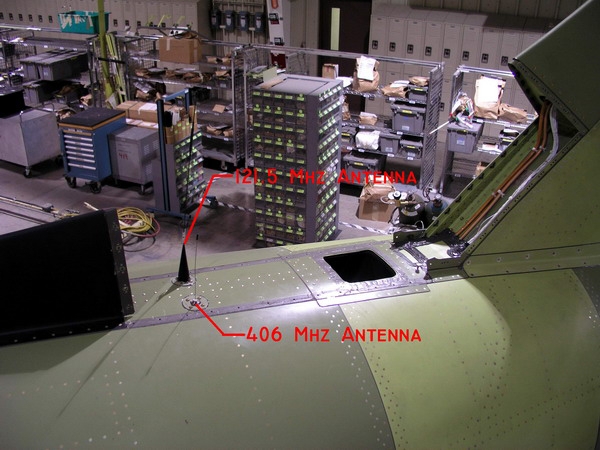
|
| Description: |
|
| Filesize: |
137.1 KB |
| Viewed: |
20489 Time(s) |
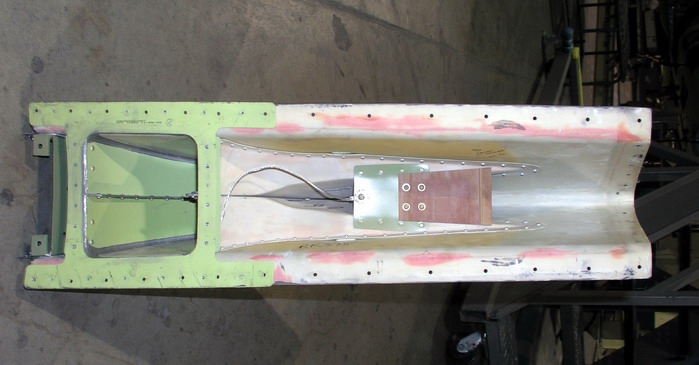
|
| Description: |
|
| Filesize: |
73.79 KB |
| Viewed: |
20489 Time(s) |
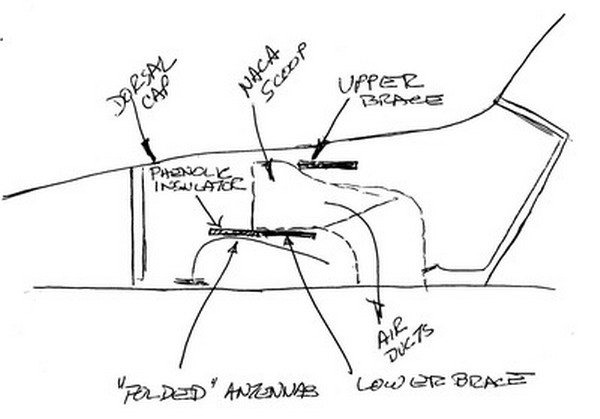
|
| Description: |
|
| Filesize: |
62.71 KB |
| Viewed: |
20489 Time(s) |
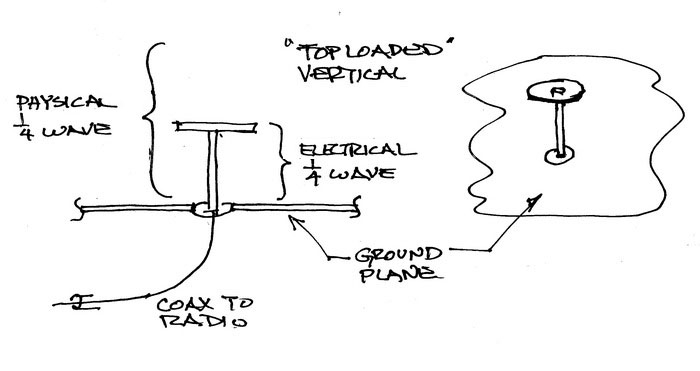
|
| Description: |
|
| Filesize: |
189.02 KB |
| Viewed: |
20489 Time(s) |
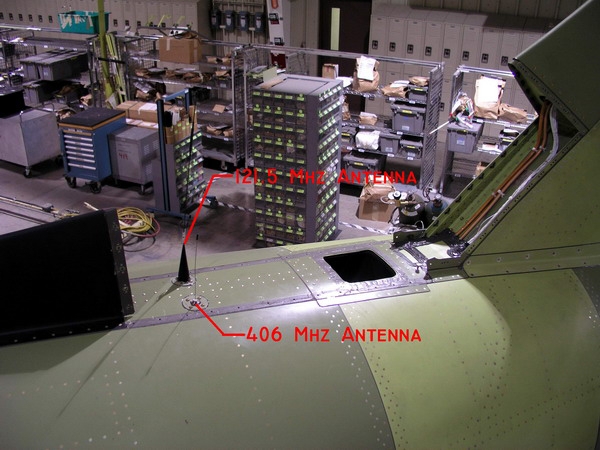
|
|
|
| Back to top |
|
 |
echristley(at)att.net
Guest
|
 Posted: Thu Aug 16, 2018 11:12 am Post subject: elt antenna Posted: Thu Aug 16, 2018 11:12 am Post subject: elt antenna |
 |
|
On Thursday, August 16, 2018 2:06 PM, FLYaDIVE <flyadive(at)gmail.com> wrote:
Personally I feel ELT's are one step above useless. They are usually in a fixed location, broken, buried,or have a dead battery. They are an FAA Reg, not a true safety, Search & Rescue device.
Consider a Personal Around the neck, or leg mounted PLT (Personal Locating Transmitter).
As stated, I agree, Barry. But, even if you have ADS-B, the FAA still makes you put that useless radio in your airplane, and they make you connect it to an antennae. My antennae practically drags the ground, and gets pulled on while picking up grass. The antennae Bob depicted looks like it would be more robust, and (being higher) wouldn't drag through the grass.
| | - The Matronics AeroElectric-List Email Forum - | | | Use the List Feature Navigator to browse the many List utilities available such as the Email Subscriptions page, Archive Search & Download, 7-Day Browse, Chat, FAQ, Photoshare, and much more:
http://www.matronics.com/Navigator?AeroElectric-List |
|
|
|
| Back to top |
|
 |
ceengland7(at)gmail.com
Guest
|
 Posted: Thu Aug 16, 2018 11:48 am Post subject: elt antenna Posted: Thu Aug 16, 2018 11:48 am Post subject: elt antenna |
 |
|
Charlie
On Aug 16, 2018, at 3:16 PM, Ernest Christley <echristley(at)att.net (echristley(at)att.net)> wrote: | Quote: |
On Thursday, August 16, 2018 2:06 PM, FLYaDIVE <flyadive(at)gmail.com> wrote:
Personally I feel ELT's are one step above useless. They are usually in a fixed location, broken, buried,or have a dead battery. They are an FAA Reg, not a true safety, Search & Rescue device.
Consider a Personal Around the neck, or leg mounted PLT (Personal Locating Transmitter).
As stated, I agree, Barry. But, even if you have ADS-B, the FAA still makes you put that useless radio in your airplane, and they make you connect it to an antennae. My antennae practically drags the ground, and gets pulled on while picking up grass. The antennae Bob depicted looks like it would be more robust, and (being higher) wouldn't drag through the grass.
Many RV builders put them inside the tail fairing, and others with tipup canopies put them on the top longeron behind the roll bar in the baggage compartment, curving up inside the rear window. If you read the mfgr's 'required' location, most type certificated light planes violate the requirements.
Charlie
|
| | - The Matronics AeroElectric-List Email Forum - | | | Use the List Feature Navigator to browse the many List utilities available such as the Email Subscriptions page, Archive Search & Download, 7-Day Browse, Chat, FAQ, Photoshare, and much more:
http://www.matronics.com/Navigator?AeroElectric-List |
|
|
|
| Back to top |
|
 |
nuckolls.bob(at)aeroelect
Guest
|
 Posted: Thu Aug 16, 2018 11:50 am Post subject: elt antenna Posted: Thu Aug 16, 2018 11:50 am Post subject: elt antenna |
 |
|
Bob,
I have some interest in that top loaded antennae you depict. I mounted my whip antennae on the belly of a Zenith 601XL, in order to remove the interference that it had with my comm antennae. Well, now it almost drags the ground. Not a good thing on a grass strip. It would be nice to have a shorter antennae.
Are we talking about an ELT antenna? 121.5 or
406 MHz?
If you're talking about a 121.5 ELT antenna,
have you looked at parking it just in front
of the vertical fin?
With that being said, I'm firmly in the camp of not ever expecting to rely on an ELT for anyone to find me. It's there and operating for legal compliance and nothing else.
I was a tech writer at Cessna when we started
putting crash actuated, 121.5/243 squawk boxes into our
products. They were maintenance headaches, prone to
false actuation and depended on terrestrial and/or
aircraft mounted direction finding equipment to
locate downed aircraft. The military variants of
the Cessna 337 (O2A forward observer aircraft)
were fitted with such direction finders . . .
[img]cid:7.1.0.9.0.20180816143700.06f6ab58(at)aeroelectric.com.0[/img]
That 'towel bar' antenna just above the windshield
was part of the search and rescue hardware in
use by military, CAP and an, no doubt a few
well heeled commercial ventures.
It wasn't until about 1980 that satellites
were fitted with 121.5 monitor receivers. The
system had no geopositioning capabilities beyond
reporting acquisition and loss times for signals.
After getting 'data' from a number of satellite
passes, the guys with slide rules and a knowledge
of spherical trig could pin the location down
to a 20 mile or so circle.
The O2A drivers had pretty good odds for locating
any signal they could hear . . . satellite drivers
not so much.
Nonetheless, thousands of lives were saved over
the early history of ELT.
GPS and UHF technologies changed the ball game.
Now, the ELT can REPORT your position to an
accuracy of a few feet. Moreover, the ability of
a UHF signal to propagate from unfriendly
environs is better. Combine this with improvements
in communications technologies and protocols,
the probability of success for transmitting
and ELT signal are improved by orders of magnitude
both in terms of location and shortening response
time. If you fly a lot over ugly/remote terrain,
a modern GPS coupled ELT is a pretty good value.
Bob . . .
| | - The Matronics AeroElectric-List Email Forum - | | | Use the List Feature Navigator to browse the many List utilities available such as the Email Subscriptions page, Archive Search & Download, 7-Day Browse, Chat, FAQ, Photoshare, and much more:
http://www.matronics.com/Navigator?AeroElectric-List |
|
| Description: |
|
| Filesize: |
339.35 KB |
| Viewed: |
20492 Time(s) |
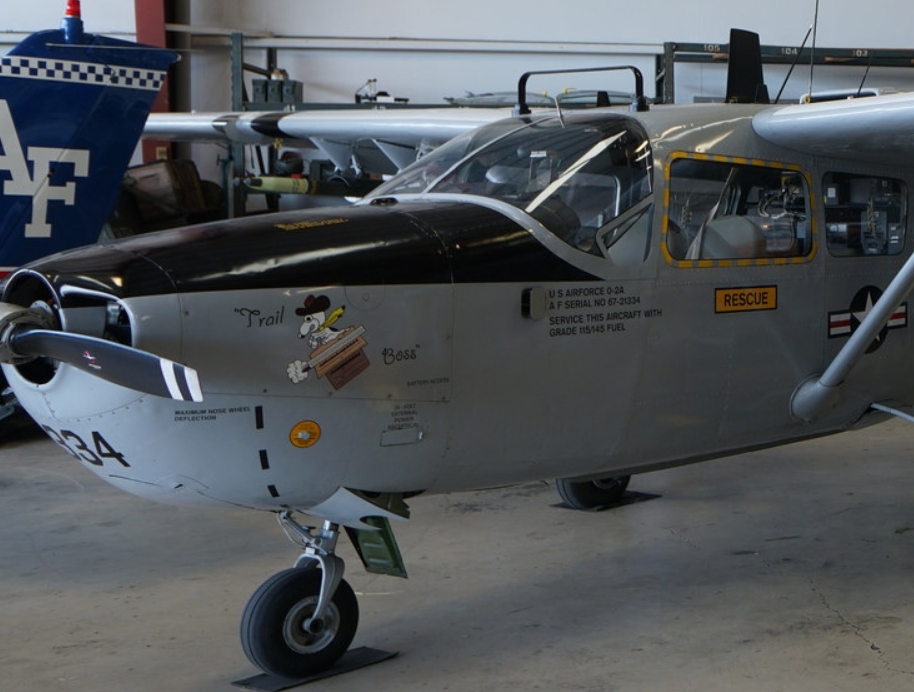
|
|
|
| Back to top |
|
 |
art(at)zemon.name
Guest
|
 Posted: Thu Aug 16, 2018 12:23 pm Post subject: elt antenna Posted: Thu Aug 16, 2018 12:23 pm Post subject: elt antenna |
 |
|
I figure that my ELT is another layer of protection for keeping my passengers and me alive. I also wear seat belts... and shoulder harnesses, and I carry a small fire extinguisher... and I have a steel firewall... well... you get the idea. Given the overall cost of my airplane, the additional dollars for the ELT are pretty small. If I crash, I figure that there is a pretty good chance that my 406 MHz ELT will survive and summon assistance. With luck, we'll still be alive when help gets to us.
Also, I figure that I owe this to my passengers. I'm not making the decision solely for myself.
  -- Art Z.
On Thu, Aug 16, 2018 at 3:12 PM Robert L. Nuckolls, III <nuckolls.bob(at)aeroelectric.com (nuckolls.bob(at)aeroelectric.com)> wrote:
| Quote: | Â Â
GPS and UHF technologies changed the ball game.
  Now, the ELT can REPORT your position to an
  accuracy of a few feet. Moreover, the ability of
  a UHF signal to propagate from unfriendly
  environs is better. Combine this with improvements
  in communications technologies and protocols,
  the probability of success for transmitting
  and ELT signal are improved by orders of magnitude
  both in terms of location and shortening response
  time. If you fly a lot over ugly/remote terrain,
  a modern GPS coupled ELT is a pretty good value.
|
--
https://CheerfulCurmudgeon.com/"We do not see the world as it is. We see the world as we are."
| | - The Matronics AeroElectric-List Email Forum - | | | Use the List Feature Navigator to browse the many List utilities available such as the Email Subscriptions page, Archive Search & Download, 7-Day Browse, Chat, FAQ, Photoshare, and much more:
http://www.matronics.com/Navigator?AeroElectric-List |
|
| Description: |
|
| Filesize: |
339.35 KB |
| Viewed: |
20492 Time(s) |
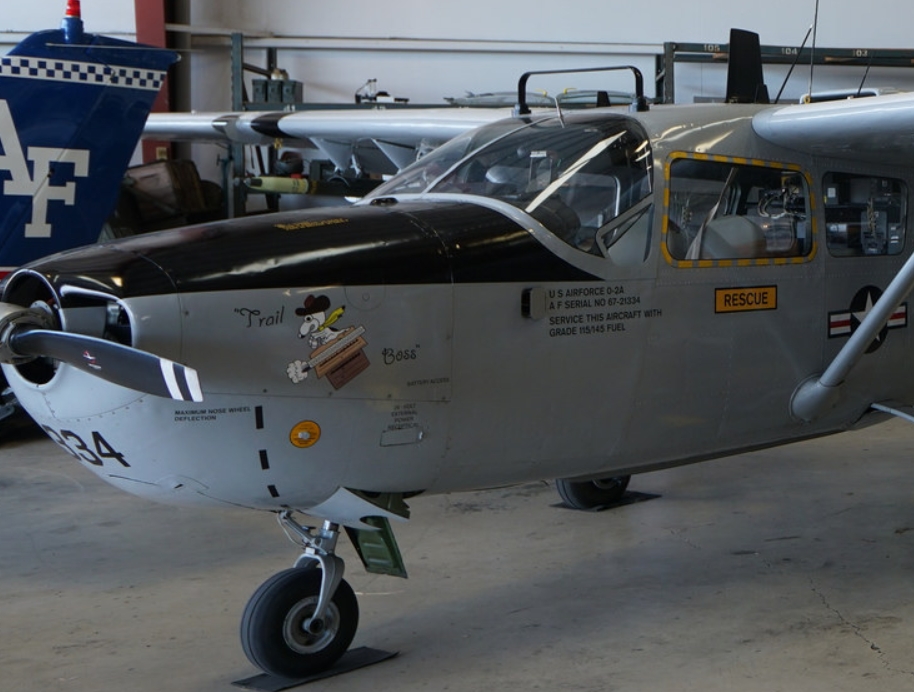
|
|
|
| Back to top |
|
 |
echristley(at)att.net
Guest
|
 Posted: Thu Aug 16, 2018 1:05 pm Post subject: elt antenna Posted: Thu Aug 16, 2018 1:05 pm Post subject: elt antenna |
 |
|
Thanks guys. It's good to know everyone is safety minded. My dad always said that if you don't have what you need, then you need what you have. An ELT is a great thing, except when compared to a host of improved technology that has replaced it. It is a last resort, but in 2018 the emphasis should be on LAST.
That being said, it won't even be a last resort if the ground dragging antennae has been ripped off by the grass at a poorly kept strip. My question concerning the T shaped antennae is a possible effort to improve the viability of my ELT as a safety device.
Is there a reference you could refer a person with a goal of building one to for that type of antennae?
On Thursday, August 16, 2018 4:25 PM, Art Zemon <art(at)zemon.name> wrote:
I figure that my ELT is another layer of protection for keeping my passengers and me alive. I also wear seat belts... and shoulder harnesses, and I carry a small fire extinguisher... and I have a steel firewall... well... you get the idea. Given the overall cost of my airplane, the additional dollars for the ELT are pretty small. If I crash, I figure that there is a pretty good chance that my 406 MHz ELT will survive and summon assistance. With luck, we'll still be alive when help gets to us.
Also, I figure that I owe this to my passengers. I'm not making the decision solely for myself.
-- Art Z.
On Thu, Aug 16, 2018 at 3:12 PM Robert L. Nuckolls, III <nuckolls.bob(at)aeroelectric.com (nuckolls.bob(at)aeroelectric.com)> wrote:
| Quote: |
GPS and UHF technologies changed the ball game.
Now, the ELT can REPORT your position to an
accuracy of a few feet. Moreover, the ability of
a UHF signal to propagate from unfriendly
environs is better. Combine this with improvements
in communications technologies and protocols,
the probability of success for transmitting
and ELT signal are improved by orders of magnitude
both in terms of location and shortening response
time. If you fly a lot over ugly/remote terrain,
a modern GPS coupled ELT is a pretty good value.
|
--
https://CheerfulCurmudgeon.com/"We do not see the world as it is. We see the world as we are."
| | - The Matronics AeroElectric-List Email Forum - | | | Use the List Feature Navigator to browse the many List utilities available such as the Email Subscriptions page, Archive Search & Download, 7-Day Browse, Chat, FAQ, Photoshare, and much more:
http://www.matronics.com/Navigator?AeroElectric-List |
|
|
|
| Back to top |
|
 |
BARRY CHECK 6
Joined: 15 Mar 2011
Posts: 738
|
 Posted: Thu Aug 16, 2018 1:11 pm Post subject: elt antenna Posted: Thu Aug 16, 2018 1:11 pm Post subject: elt antenna |
 |
|
AWESOME - BOB, AWESOME! I was USAF radio maintenance in Korea with the 19th Task Force and did a little flying in O-2's up at the DMZ.
Barry
On Thu, Aug 16, 2018 at 3:56 PM Robert L. Nuckolls, III <nuckolls.bob(at)aeroelectric.com (nuckolls.bob(at)aeroelectric.com)> wrote:
| Quote: | Bob,
I have some interest in that top loaded antennae you depict. I mounted my whip antennae on the belly of a Zenith 601XL, in order to remove the interference that it had with my comm antennae. Well, now it almost drags the ground. Not a good thing on a grass strip. It would be nice to have a shorter antennae.
Â
  Are we talking about an ELT antenna? 121.5 or
  406 MHz?
  If you're talking about a 121.5 ELT antenna,
  have you looked at parking it just in front
  of the vertical fin?
With that being said, I'm firmly in the camp of not ever expecting to rely on an ELT for anyone to find me. It's there and operating for legal compliance and nothing else.
  I was a tech writer at Cessna when we started
  putting crash actuated, 121.5/243 squawk boxes into our
  products. They were maintenance headaches, prone to
  false actuation and depended on terrestrial and/or
  aircraft mounted direction finding equipment to
  locate downed aircraft. The military variants of
  the Cessna 337 (O2A forward observer aircraft)
  were fitted with such direction finders . . .
[img]cid:7.1.0.9.0.20180816143700.06f6ab58(at)aeroelectric.com.0[/img]
  That 'towel bar' antenna just above the windshield
  was part of the search and rescue hardware in
  use by military, CAP and an, no doubt a few
  well heeled commercial ventures.
  It wasn't until about 1980 that satellites
  were fitted with 121.5 monitor receivers. The
  system had no geopositioning capabilities beyond
  reporting acquisition and loss times for signals.
  After getting 'data' from a number of satellite
  passes, the guys with slide rules and a knowledge
  of spherical trig could pin the location down
  to a 20 mile or so circle.
  The O2A drivers had pretty good odds for locating
  any signal they could hear . . . satellite drivers
  not so much.
  Nonetheless, thousands of lives were saved over
  the early history of ELT.
  GPS and UHF technologies changed the ball game.
  Now, the ELT can REPORT your position to an
  accuracy of a few feet. Moreover, the ability of
  a UHF signal to propagate from unfriendly
  environs is better. Combine this with improvements
  in communications technologies and protocols,
  the probability of success for transmitting
  and ELT signal are improved by orders of magnitude
  both in terms of location and shortening response
  time. If you fly a lot over ugly/remote terrain,
  a modern GPS coupled ELT is a pretty good value.
 Bob . . .
|
| | - The Matronics AeroElectric-List Email Forum - | | | Use the List Feature Navigator to browse the many List utilities available such as the Email Subscriptions page, Archive Search & Download, 7-Day Browse, Chat, FAQ, Photoshare, and much more:
http://www.matronics.com/Navigator?AeroElectric-List |
|
| Description: |
|
| Filesize: |
339.35 KB |
| Viewed: |
20491 Time(s) |
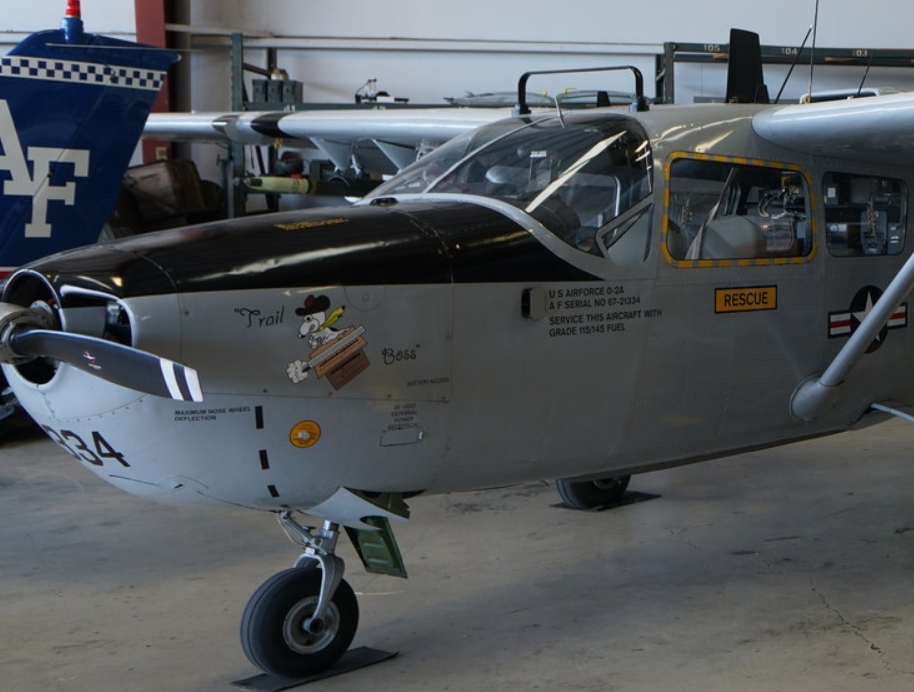
|
| Description: |
|
| Filesize: |
339.35 KB |
| Viewed: |
20491 Time(s) |
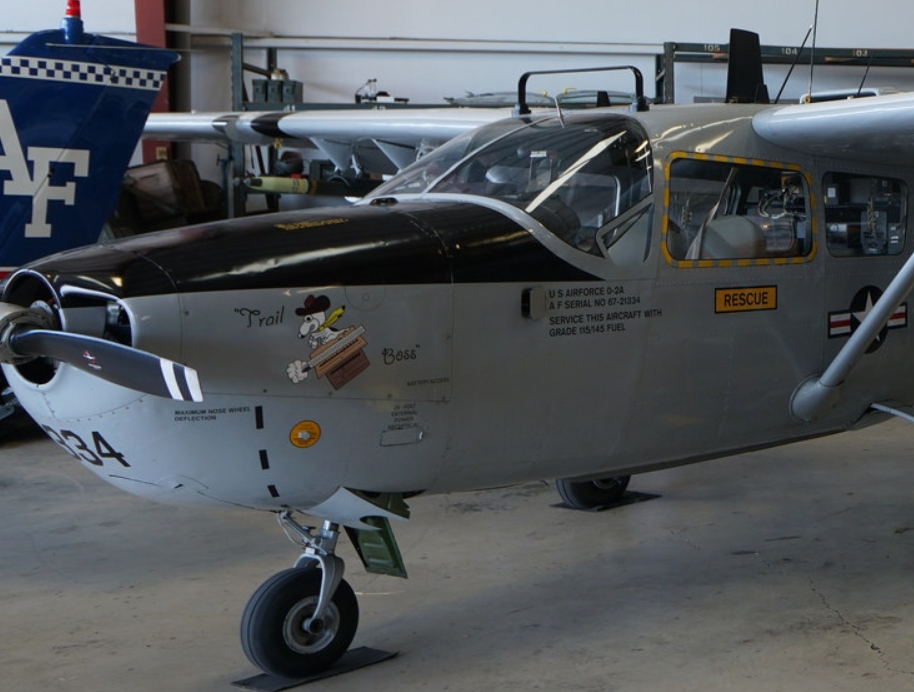
|
|
|
| Back to top |
|
 |
ceengland7(at)gmail.com
Guest
|
 Posted: Thu Aug 16, 2018 2:07 pm Post subject: elt antenna Posted: Thu Aug 16, 2018 2:07 pm Post subject: elt antenna |
 |
|
Don't know if this is something that concerns you, but the antenna is part of the elt's certification. Obviously any comm antenna will work (for the old 121.5 models), but they won't be 'legal'.
The new '406' units are a different story; I'm pretty sure that they are dual freq transmitters, needing an antenna that can handle both 406 and 121.5.
Charlie
On Aug 16, 2018, at 5:11 PM, Ernest Christley <echristley(at)att.net (echristley(at)att.net)> wrote: | Quote: | Thanks guys. It's good to know everyone is safety minded. My dad always said that if you don't have what you need, then you need what you have. An ELT is a great thing, except when compared to a host of improved technology that has replaced it. It is a last resort, but in 2018 the emphasis should be on LAST.
That being said, it won't even be a last resort if the ground dragging antennae has been ripped off by the grass at a poorly kept strip. My question concerning the T shaped antennae is a possible effort to improve the viability of my ELT as a safety device.
Is there a reference you could refer a person with a goal of building one to for that type of antennae?
On Thursday, August 16, 2018 4:25 PM, Art Zemon <art(at)zemon.name> wrote:
I figure that my ELT is another layer of protection for keeping my passengers and me alive. I also wear seat belts... and shoulder harnesses, and I carry a small fire extinguisher... and I have a steel firewall... well... you get the idea. Given the overall cost of my airplane, the additional dollars for the ELT are pretty small. If I crash, I figure that there is a pretty good chance that my 406 MHz ELT will survive and summon assistance. With luck, we'll still be alive when help gets to us.
Also, I figure that I owe this to my passengers. I'm not making the decision solely for myself.
-- Art Z.
On Thu, Aug 16, 2018 at 3:12 PM Robert L. Nuckolls, III <nuckolls.bob(at)aeroelectric.com (nuckolls.bob(at)aeroelectric.com)> wrote:
| Quote: |
GPS and UHF technologies changed the ball game.
Now, the ELT can REPORT your position to an
accuracy of a few feet. Moreover, the ability of
a UHF signal to propagate from unfriendly
environs is better. Combine this with improvements
in communications technologies and protocols,
the probability of success for transmitting
and ELT signal are improved by orders of magnitude
both in terms of location and shortening response
time. If you fly a lot over ugly/remote terrain,
a modern GPS coupled ELT is a pretty good value.
|
--
https://CheerfulCurmudgeon.com/"We do not see the world as it is. We see the world as we are."
|
| | - The Matronics AeroElectric-List Email Forum - | | | Use the List Feature Navigator to browse the many List utilities available such as the Email Subscriptions page, Archive Search & Download, 7-Day Browse, Chat, FAQ, Photoshare, and much more:
http://www.matronics.com/Navigator?AeroElectric-List |
|
|
|
| Back to top |
|
 |
kenryan
Joined: 20 Oct 2009
Posts: 429
|
 Posted: Thu Aug 16, 2018 2:17 pm Post subject: elt antenna Posted: Thu Aug 16, 2018 2:17 pm Post subject: elt antenna |
 |
|
Art, your thinking is correct. To say modern 406 ELTs are no good is astatement that cannot be rationally justified. The fact is, they are fantastic devices.Â
I'm not big on "required equipment" but I think if you ever fly in such a way
that you might trigger a search event (ie with a flight plan or having family
notify SAR if you don't return) then you owe it to the searchers to have aÂ
modern 406 ELT. There is certainly nothing wrong with also carryingÂ
a PLB. I certainly do. Just last month a buddy wrecked his airplane (he was unhurt).
He said that within about two minutes his cell phone rang. It was SAR askingÂ
him if he was okay. By the way, his antenna was externally mounted on top of theÂ
all metal airplane, and he flipped it. If you read about the recent tragedy on Denali,Â
then you know that thanks to the 406 ELT searchers knew exactly where the airplane
was located. Unfortunately it didn't save any lives in the crashed airplane, but it very wellÂ
might have saved lives by completely eliminating the search portion of SAR.
On Thu, Aug 16, 2018 at 12:30 PM Art Zemon <art(at)zemon.name (art(at)zemon.name)> wrote:
| Quote: | I figure that my ELT is another layer of protection for keeping my passengers and me alive. I also wear seat belts... and shoulder harnesses, and I carry a small fire extinguisher... and I have a steel firewall... well... you get the idea. Given the overall cost of my airplane, the additional dollars for the ELT are pretty small. If I crash, I figure that there is a pretty good chance that my 406 MHz ELT will survive and summon assistance. With luck, we'll still be alive when help gets to us.
Also, I figure that I owe this to my passengers. I'm not making the decision solely for myself.
  -- Art Z.
On Thu, Aug 16, 2018 at 3:12 PM Robert L. Nuckolls, III <nuckolls.bob(at)aeroelectric.com (nuckolls.bob(at)aeroelectric.com)> wrote:
| Quote: | Â Â
GPS and UHF technologies changed the ball game.
  Now, the ELT can REPORT your position to an
  accuracy of a few feet. Moreover, the ability of
  a UHF signal to propagate from unfriendly
  environs is better. Combine this with improvements
  in communications technologies and protocols,
  the probability of success for transmitting
  and ELT signal are improved by orders of magnitude
  both in terms of location and shortening response
  time. If you fly a lot over ugly/remote terrain,
  a modern GPS coupled ELT is a pretty good value.
|
--
https://CheerfulCurmudgeon.com/"We do not see the world as it is. We see the world as we are."
|
| | - The Matronics AeroElectric-List Email Forum - | | | Use the List Feature Navigator to browse the many List utilities available such as the Email Subscriptions page, Archive Search & Download, 7-Day Browse, Chat, FAQ, Photoshare, and much more:
http://www.matronics.com/Navigator?AeroElectric-List |
|
|
|
| Back to top |
|
 |
stuart(at)stuarthutchison
Guest
|
 Posted: Thu Aug 16, 2018 3:45 pm Post subject: ELT antenna Posted: Thu Aug 16, 2018 3:45 pm Post subject: ELT antenna |
 |
|
Thanks Bob.
Could you confirm please that the threaded metal mount of a base-loaded 406MHz ELT antenna should definitely have some ground plane like a COM antenna? Pictured below is my current installation and the ELT antenna, but I need to add some flexibility to the attach point in a small space on the upper surface of the fuselage without compromising grounding (I think).
Also, as a former principle RAAF SAR Officer (USCG and USAF trained), I should add a few comments about 121.5 and 406MHz beacon safety that I think our aviation community might benefit from:
Old system - 121.5 / 243.0 MHz
1. 121.5MHz satellite COSPAS/SARSAT reception (payloads piggy backed on NOAA satellites, among others) primarily used doppler shift (frequency change, much like the sound of a train approaching, passing and leaving you) to determine the abeam point (centre frequency) during each satellite pass. Unfortunately, there is an abeam on both sides of the satellite path, so multiple passes were required to resolve the fix ambiguity. While there were lots of satellites fitted with this payload, it could still take as long as 12 hours to achieve multiple passes and a decent search datum to launch SAR assets to. In fact, when a C-130 crash position indicator was popped off the tail around Cootamundra (near Canberra, Australia), it still took nine hours for COSPAS/SARSAT to provide a start datum, despite knowing where to look.
2. 121.5MHz beacon frequency stability was relatively poor, meaning establishing centre frequency was inaccurate and the possible datum ellipse was commensurately large (not so great for limited SAR resources).
3. The approximate 121.5MHz position was then used to for local Direction Finding via other platforms.
4. The COSPAS/SARSAT network was highly susceptible to false alarms triggered by stray RF. Approximately 95% of alerts were false the world over, meaning already resource limited SAR assets were being wasted and potentially denying people in real need.
New system - 406.025MHz
1. 406MHz signals are digital and it incorporate a unique HEXID, which is 15 digits long. It can be appended with all sorts of information in a long or short message format. Geostationary satellites can collect this information and the Rescue Coordination Centre immediately knows (from the registration database) whose ELT is active. Form the database they can obtain your contact details and call you or your nominated alternative points of contact.
2. If your 406 ELT doesnât have a GPS input (either an inbuilt GPS receiver, or GPS feed signal from the NAV system onboard your aircraft), then Low Earth Orbit (LEO) satellite passes still take time to conduct doppler analysis for position. However, the frequency stability of modern 406.025MHz ELTs provides a much smaller ellipse of about 5km. 406 beacons must still have a 121.5 swept tone signal for localised rescue platforms to direction find, but that the COSPAS/SARSAT detection of 121.5 was switched off back in Feb 2009.
3. If your 406 ELT does have a GPS input (highly recommended option), then the position is appended to the long message digital broadcast and is received by the RCC as soon as a valid GPS fix is obtained ⦠obviously a much better option!
I have a non-GPS Kannad Compact ELT connected to this antenna, which has frangible switches to activate automatically in a crash. I also have a GPS PLB, which I can activate if I am still alive or become separated from the aircraft (such as after ditching perhaps). Small price to pay for a lot of assurance that rescuers know where to start looking and when. Exposure is the big killer (assuming injuries are survivable) and often the first 24 hours are the only 24 hours to rescue before itâs too late, so itâs in our best interests to start the search and rescue in the right place.
Regards, Stu
[img]cid:26B64D6E-313B-4AF6-B599-0C6A5826763C(at)Home[/img]
[img]cid:CBCF82DB-338D-4E4E-ADD4-07193AC9AC58(at)Home[/img] | Quote: | On 17 Aug 2018, at 08:16, Ken Ryan <keninalaska(at)gmail.com (keninalaska(at)gmail.com)> wrote:
Art, your thinking is correct. To say modern 406 ELTs are no good is astatement that cannot be rationally justified. The fact is, they are fantastic devices.
I'm not big on "required equipment" but I think if you ever fly in such a way
that you might trigger a search event (ie with a flight plan or having family
notify SAR if you don't return) then you owe it to the searchers to have a
modern 406 ELT. There is certainly nothing wrong with also carrying
a PLB. I certainly do. Just last month a buddy wrecked his airplane (he was unhurt).
He said that within about two minutes his cell phone rang. It was SAR asking
him if he was okay. By the way, his antenna was externally mounted on top of the
all metal airplane, and he flipped it. If you read about the recent tragedy on Denali,
then you know that thanks to the 406 ELT searchers knew exactly where the airplane
was located. Unfortunately it didn't save any lives in the crashed airplane, but it very well
might have saved lives by completely eliminating the search portion of SAR.
On Thu, Aug 16, 2018 at 12:30 PM Art Zemon <art(at)zemon.name (art(at)zemon.name)> wrote:
| Quote: | I figure that my ELT is another layer of protection for keeping my passengers and me alive. I also wear seat belts... and shoulder harnesses, and I carry a small fire extinguisher... and I have a steel firewall... well... you get the idea. Given the overall cost of my airplane, the additional dollars for the ELT are pretty small. If I crash, I figure that there is a pretty good chance that my 406 MHz ELT will survive and summon assistance. With luck, we'll still be alive when help gets to us.
Also, I figure that I owe this to my passengers. I'm not making the decision solely for myself.
-- Art Z.
On Thu, Aug 16, 2018 at 3:12 PM Robert L. Nuckolls, III <nuckolls.bob(at)aeroelectric.com (nuckolls.bob(at)aeroelectric.com)> wrote:
| Quote: |
GPS and UHF technologies changed the ball game. Now, the ELT can REPORT your position to an accuracy of a few feet. Moreover, the ability of a UHF signal to propagate from unfriendly environs is better. Combine this with improvements in communications technologies and protocols, the probability of success for transmitting and ELT signal are improved by orders of magnitude both in terms of location and shortening response time. If you fly a lot over ugly/remote terrain, a modern GPS coupled ELT is a pretty good value.
|
-- https://CheerfulCurmudgeon.com/"We do not see the world as it is. We see the world as we are."
|
|
| | - The Matronics AeroElectric-List Email Forum - | | | Use the List Feature Navigator to browse the many List utilities available such as the Email Subscriptions page, Archive Search & Download, 7-Day Browse, Chat, FAQ, Photoshare, and much more:
http://www.matronics.com/Navigator?AeroElectric-List |
|
| Description: |
|
| Filesize: |
440.84 KB |
| Viewed: |
20489 Time(s) |

|
| Description: |
|
| Filesize: |
192.17 KB |
| Viewed: |
20489 Time(s) |

|
|
|
| Back to top |
|
 |
Kellym
Joined: 10 Jan 2006
Posts: 1706
Location: Sun Lakes AZ
|
 Posted: Thu Aug 16, 2018 4:26 pm Post subject: elt antenna Posted: Thu Aug 16, 2018 4:26 pm Post subject: elt antenna |
 |
|
Legality depends on whether it is on a certified aircraft or not. AFAIK,
for OBAM experimental aircraft I believe the ELT and antenna only have
to meet the performance criteria of the TSO, not the letter of it.
Why the antennas were ever part of the certification is a mystery. They
could have just as easily said a 121.5 antenna with less than x.yy SWR.
A Narco ELT antenna isn't legal with an ACK ELT and vice versa, even
though they are the same freq. for same purpose and probably very close
in SWR.
On 8/16/2018 3:06 PM, Charlie England wrote:
| Quote: | Don't know if this is something that concerns you, but the antenna is
part of the elt's certification. Obviously any comm antenna will work
(for the old 121.5 models), but they won't be 'legal'.
The new '406' units are a different story; I'm pretty sure that they are
dual freq transmitters, needing an antenna that can handle both 406 and
121.5.
Charlie
On Aug 16, 2018, at 5:11 PM, Ernest Christley <echristley(at)att.net
<mailto:echristley(at)att.net>> wrote:
Thanks guys. It's good to know everyone is safety minded. My dad
always said that if you don't have what you need, then you need what
you have. An ELT is a great thing, except when compared to a host
of improved technology that has replaced it. It is a last resort,
but in 2018 the emphasis should be on LAST.
That being said, it won't even be a last resort if the ground
dragging antennae has been ripped off by the grass at a poorly kept
strip. My question concerning the T shaped antennae is a possible
effort to improve the viability of my ELT as a safety device.
Is there a reference you could refer a person with a goal of
building one to for that type of antennae?
On Thursday, August 16, 2018 4:25 PM, Art Zemon <art(at)zemon.name> wrote:
I figure that my ELT is another layer of protection for keeping my
passengers and me alive. I also wear seat belts... and shoulder
harnesses, and I carry a small fire extinguisher... and I have a
steel firewall... well... you get the idea. Given the overall cost
of my airplane, the additional dollars for the ELT are pretty small.
If I crash, I figure that there is a pretty good chance that my 406
MHz ELT will survive and summon assistance. With luck, we'll still
be alive when help gets to us.
Also, I figure that I owe this to my passengers. I'm not making the
decision solely for myself.
  -- Art Z.
On Thu, Aug 16, 2018 at 3:12 PM Robert L. Nuckolls, III
<nuckolls.bob(at)aeroelectric.com
<mailto:nuckolls.bob(at)aeroelectric.com>> wrote:
GPS and UHF technologies changed the ball game.
  Now, the ELT can REPORT your position to an
  accuracy of a few feet. Moreover, the ability of
  a UHF signal to propagate from unfriendly
  environs is better. Combine this with improvements
  in communications technologies and protocols,
  the probability of success for transmitting
  and ELT signal are improved by orders of magnitude
  both in terms of location and shortening response
  time. If you fly a lot over ugly/remote terrain,
  a modern GPS coupled ELT is a pretty good value.
--
https://CheerfulCurmudgeon.com/ <https://cheerfulcurmudgeon.com/>
/"We do not see the world as it is. We see the world as we are."/
|
| | - The Matronics AeroElectric-List Email Forum - | | | Use the List Feature Navigator to browse the many List utilities available such as the Email Subscriptions page, Archive Search & Download, 7-Day Browse, Chat, FAQ, Photoshare, and much more:
http://www.matronics.com/Navigator?AeroElectric-List |
|
_________________
Kelly McMullen
A&P/IA, EAA Tech Counselor # 5286
KCHD |
|
| Back to top |
|
 |
BARRY CHECK 6
Joined: 15 Mar 2011
Posts: 738
|
 Posted: Thu Aug 16, 2018 6:23 pm Post subject: elt antenna Posted: Thu Aug 16, 2018 6:23 pm Post subject: elt antenna |
 |
|
"A Narco ELT antenna isn't legal with an ACK ELT and vice versa, evenÂ
though they are the same freq. for same purpose and probably very close in SWR."
Yea! Don't ya just love it... When Lawyers become EE's!!!
I had that exact problem with a 337. Except the ELT Antenna was supplied by the aircraft manufacture.
Manufacture - trumps - Supplier.
Barry
On Thu, Aug 16, 2018 at 8:31 PM Kelly McMullen <kellym(at)aviating.com (kellym(at)aviating.com)> wrote:
| Quote: | --> AeroElectric-List message posted by: Kelly McMullen <kellym(at)aviating.com (kellym(at)aviating.com)>
Legality depends on whether it is on a certified aircraft or not. AFAIK,
for OBAM experimental aircraft I believe the ELT and antenna only have
to meet the performance criteria of the TSO, not the letter of it.
Why the antennas were ever part of the certification is a mystery. They
could have just as easily said a 121.5 antenna with less than x.yy SWR.
A Narco ELT antenna isn't legal with an ACK ELT and vice versa, even
though they are the same freq. for same purpose and probably very close
in SWR.
On 8/16/2018 3:06 PM, Charlie England wrote:
> Don't know if this is something that concerns you, but the antenna is
> part of the elt's certification. Obviously any comm antenna will work
> (for the old 121.5 models), but they won't be 'legal'.
>
> The new '406' units are a different story; I'm pretty sure that they are
> dual freq transmitters, needing an antenna that can handle both 406 and
> 121.5.
>
> Charlie
> On Aug 16, 2018, at 5:11 PM, Ernest Christley <echristley(at)att.net (echristley(at)att.net)
> <mailto:echristley(at)att.net (echristley(at)att.net)>> wrote:
>
>   Thanks guys. It's good to know everyone is safety minded. My dad
>Â Â Â always said that if you don't have what you need, then you need what
>   you have. An ELT is a great thing, except when compared to a host
>   of improved technology that has replaced it. It is a last resort,
>   but in 2018 the emphasis should be on LAST.
>
>Â Â Â That being said, it won't even be a last resort if the ground
>Â Â Â dragging antennae has been ripped off by the grass at a poorly kept
>   strip. My question concerning the T shaped antennae is a possible
>Â Â Â effort to improve the viability of my ELT as a safety device.
>
>Â Â Â Is there a reference you could refer a person with a goal of
>   building one to for that type of antennae?
>
>
>Â Â Â On Thursday, August 16, 2018 4:25 PM, Art Zemon <art(at)zemon.name (art(at)zemon.name)> wrote:
>
>
>Â Â Â I figure that my ELT is another layer of protection for keeping my
>Â Â Â passengers and me alive. I also wear seat belts... and shoulder
>Â Â Â harnesses, and I carry a small fire extinguisher... and I have a
>Â Â Â steel firewall... well... you get the idea. Given the overall cost
>Â Â Â of my airplane, the additional dollars for the ELT are pretty small.
>Â Â Â If I crash, I figure that there is a pretty good chance that my 406
>Â Â Â MHz ELT will survive and summon assistance. With luck, we'll still
>Â Â Â be alive when help gets to us.
>
>Â Â Â Also, I figure that I owe this to my passengers. I'm not making the
>Â Â Â decision solely for myself.
>
>Â Â Â Â Â -- Art Z.
>
>Â Â Â On Thu, Aug 16, 2018 at 3:12 PM Robert L. Nuckolls, III
>Â Â Â <nuckolls.bob(at)aeroelectric.com (nuckolls.bob(at)aeroelectric.com)
>Â Â Â <mailto:nuckolls.bob(at)aeroelectric.com (nuckolls.bob(at)aeroelectric.com)>> wrote:
>
>Â Â Â Â Â GPS and UHF technologies changed the ball game.
>Â Â Â Â Â Â Â Now, the ELT can REPORT your position to an
>Â Â Â Â Â Â Â accuracy of a few feet. Moreover, the ability of
>Â Â Â Â Â Â Â a UHF signal to propagate from unfriendly
>Â Â Â Â Â Â Â environs is better. Combine this with improvements
>Â Â Â Â Â Â Â in communications technologies and protocols,
>Â Â Â Â Â Â Â the probability of success for transmitting
>Â Â Â Â Â Â Â and ELT signal are improved by orders of magnitude
>Â Â Â Â Â Â Â both in terms of location and shortening response
>Â Â Â Â Â Â Â time. If you fly a lot over ugly/remote terrain,
>Â Â Â Â Â Â Â a modern GPS coupled ELT is a pretty good value.
>
>
>Â Â Â --
>Â Â Â https://CheerfulCurmudgeon.com/ <https://cheerfulcurmudgeon.com/>
>
>Â Â Â /"We do not see the world as it is. We see the world as we are."/
>
>
===========
-
Electric-List" rel="noreferrer" target="_blank">http://www.matronics.com/Navigator?AeroElectric-List
===========
FORUMS -
eferrer" target="_blank">http://forums.matronics.com
===========
WIKI -
errer" target="_blank">http://wiki.matronics.com
===========
b Site -
     -Matt Dralle, List Admin.
rel="noreferrer" target="_blank">http://www.matronics.com/contribution
===========
|
| | - The Matronics AeroElectric-List Email Forum - | | | Use the List Feature Navigator to browse the many List utilities available such as the Email Subscriptions page, Archive Search & Download, 7-Day Browse, Chat, FAQ, Photoshare, and much more:
http://www.matronics.com/Navigator?AeroElectric-List |
|
|
|
| Back to top |
|
 |
stuart(at)stuarthutchison
Guest
|
 Posted: Thu Aug 16, 2018 11:17 pm Post subject: elt antenna Posted: Thu Aug 16, 2018 11:17 pm Post subject: elt antenna |
 |
|
Barry,
For sure many aircraft finish upside down after a sudden stop ⦠the 400lb engine up front of my tailwheel aircraft will almost guarantee that. However, I've installed the whip antenna just forward of the vertical stab where it should be reasonably protected from a tip over. I have reviewed numerous RV and Rocket wrecks and think my ELT installation has a pretty good chance of remaining operational, provided I mount the coax with sufficient slack and flexibility to withstand a buckling fuselage. Even an inverted whip is correctly oriented for low altitude (i.e. closer to the horizon) satellites to receive from a âdonutâ radiation pattern. And, no matter which Local User Terminal around the world receives the signal, the position will still be re-routed to the correct RCC for SAR response in near real time. The 406MHz data burst is .45 to .55 seconds long at 5W and randomised around 100 second intervals, so it has a good chance of being received and relayed by at least one satellite.
I donât mean to preach and there are a great many wise people on this forum, but respectfully, from a Search and Rescue Officer's point of view, I couldn't disagree more with those who think an ELT is a waste of time and money. Years of SAR missions as a P3 Orion Tactical Coordinator for the Australian RCC, plus many more years as an Operations Officer, then SAR Officer and SAR instructor have proven time and time again to me the value of ELTs, especially 406 with embedded GPS. Crashed aircraft are incredibly difficult to see from the air when moving at between 2 and 4 nautical miles a minute. Yes ADS-B is a great starting datum for ATC & SAR, but if, for example, you have an electrical issue late one afternoon that stops ADS-B output (smoke and fumes or inflight fire that requires load shedding) and becomes a crash situation, just a few minutes of cruising off flight plan can easily delay location and rescue way past your overnight survival time. I can tell you from first hand experience in the RCC that it is very distressing for rescuers to miss you by just a few hundred feet or a few hours. It is even worse for the family left behind to realise that you might have been alive long enough to rescue if we had known exactly where to look. In fact, a former Senior Naval Officer at our School of Air Navigation lost his son in a light aircraft crash. A small piece of media misinformation meant a critical piece of search intelligence was overlooked. The pilot and passenger were located some months later in a follow-on search funded by the father, only to find that his son had survived with a broken leg for what was believed to be a week after the crash before succumbing to exposure.
Itâs a morbid subject, but aviation is intolerant of fools and as aviators we need to be properly trained, equipped and prepared. The mandate is there for good reason, so we should install the ELT correctly, register and maintain it ⦠itâs definitely not worth risking your life to neglect the ELT / PLB. And, carry a jumper  The priorities of survival are Protection (from the elements), Location (signalling devices, fires etc), Water, Food ⦠in that order. We can survive for three days without water and 30 days without food, but who would want to do that? Iâd rather get outta there. The priorities of survival are Protection (from the elements), Location (signalling devices, fires etc), Water, Food ⦠in that order. We can survive for three days without water and 30 days without food, but who would want to do that? Iâd rather get outta there.
Kind regards, Stu
| Quote: | On 17 Aug 2018, at 03:59, FLYaDIVE <flyadive(at)gmail.com (flyadive(at)gmail.com)> wrote:
Many, if not Most crashes wind up with the plane Up-Side-Down.
So top mounted antennas become buried in the dirt or broken off.
When an aluminum plane is upside down there is even more of a barrier between the ELT antenna and the sky.
Wing Tips usually have the least amount of damage from a crash.
And, they are usually the farest away from the fuel tanks, the Horz Stab wing tips being the best location.
Personally I feel ELT's are one step above useless. They are usually in a fixed location, broken, buried,or have a dead battery. They are an FAA Reg, not a true safety, Search & Rescue device.
Consider a Personal Around the neck, or leg mounted PLT (Personal Locating Transmitter).
Choose wisely Grasshopper,
Barry
|
| | - The Matronics AeroElectric-List Email Forum - | | | Use the List Feature Navigator to browse the many List utilities available such as the Email Subscriptions page, Archive Search & Download, 7-Day Browse, Chat, FAQ, Photoshare, and much more:
http://www.matronics.com/Navigator?AeroElectric-List |
|
|
|
| Back to top |
|
 |
|
|
You cannot post new topics in this forum
You cannot reply to topics in this forum
You cannot edit your posts in this forum
You cannot delete your posts in this forum
You cannot vote in polls in this forum
You cannot attach files in this forum
You can download files in this forum
|
Powered by phpBB © 2001, 2005 phpBB Group
|


























